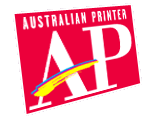Tags:
There is at least one good reason for drupa 2004 to stick out in the memory of the printing industry: It is set to give JDF (Job Definition Format) the final push needed to make its ultimate breakthrough.This brings the printing industry a whole lot closer to catching up with other industries which, despite equally heterogeneous system environments, have long since automated value-added processes across entire ranges of tasks and even between companies. In printing production, however, the individual stages involved are still largely restricted to operating as separate automation subsystems.
"Up until now, job-specific information did not travel automatically from the client, through management systems to production planning and control and then via prepress and press before going to converting and finally logistics – and it is certainly not possible for clients to track their order’s progress without having to call and enquire", says Uwe Klemm, Managing Director of Adobe Systems GmbH, describing the current problem.
Rather, it is all too often the case that information for printing production nowadays still has to be re-captured and prepared. That costs time as well as money and, on top of everything, is the source of many errors. In other words, up until now industrial production has been practically out of reach for the majority of printing houses.
Thanks to JDF, this is set to change in the near future. The data format jointly initiated by Adobe, Agfa, Heidelberg and MAN Roland merges an industry standard for job tickets with a message description standard and a message interchange protocol.
Rainer Prosi, chief JDF developer at Heidelberger Druckmaschinen AG outlines the consortium’s objective by saying: "In terms of providing an automated production and job information exchange that is not only compatible with different platforms and applications but also works between companies, JDF will propel the print and media industry a good way forward".
Although all the specifications for the XML-based JDF standard have not yet been fully defined by the CIP4 Consortium, the vendor-independent standards promise to put the printing industry on the road to creating a more open system environment and consequently to setting up end-to-end value-added chains.
Just about all the manufacturers of note in the industry are members of the CIP4 standardisation committee based in Switzerland. If for no other reason than this, visitors to the print media fair drupa 2004 will encounter JDF at every turn – whether in the form of new solutions for web-based project and production management, JDF updates for existing solutions or in lectures and white papers.
"JDF will not make previous printing industry standards, such as PDF (Portable Document Format), PJTF (Portable Job Ticket Format), PPF (Print Production Format) or JMF (Job Messaging Format) redundant; at most, it will replace them in part", says Prosi, correcting a widespread misconception.
Instead, this standard builds onto existing formats and greatly enhances the potential for integration of current automation subsystems, particularly in heterogeneous system environments. It represents a huge leap forward. But JDF is by no means the end of the road: "JDF takes care of the production workflow and can also generate information for inventory management and accounting, for example. But the long-term goal is definitely the seamless integration of all these aspects", points out Kemm, sketching the direction things will take beyond JDF.
drupa 2008 may well usher in a standard for the integration of such aspects and the creation of a truly comprehensive value chain. But for now, let’s just focus on drupa 2004, to be staged from May 6 to 19 2004. In far too many printing businesses, the question of what far-reaching changes might be triggered by the integration options offered by the JDF standard – assuming the job data has the necessary quality – has not yet been given a thought. May next year should profoundly alter this state of affairs.
To ensure that the new data format standard becomes more than just a theory, CIP4 has taken practical steps towards implementing JDF. The System Behaviour and Interoperability working group has long provided a forum for software developers from various manufacturers to put data exchanges between products into practice. Their aim is to present a comprehensive workflow scenario at drupa 2004, in which products from several manufacturers work in harmony.
One of a continuing series of technology articles published by the Printer Magazines Group in the countdown to drupa 2004.






